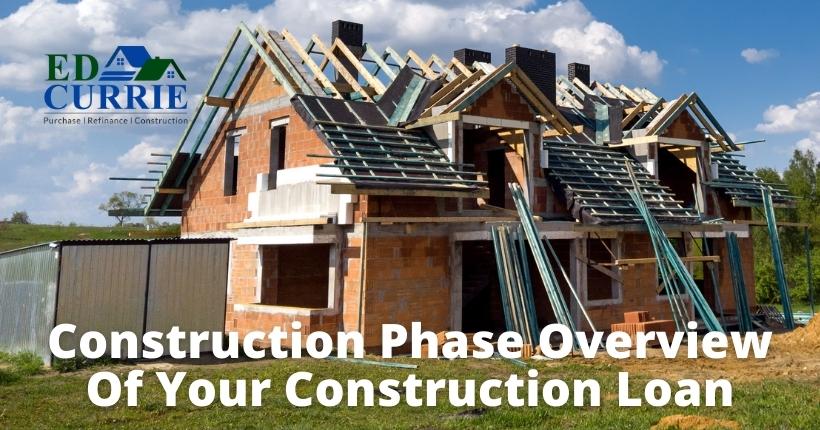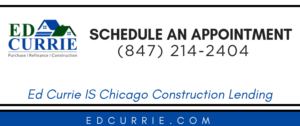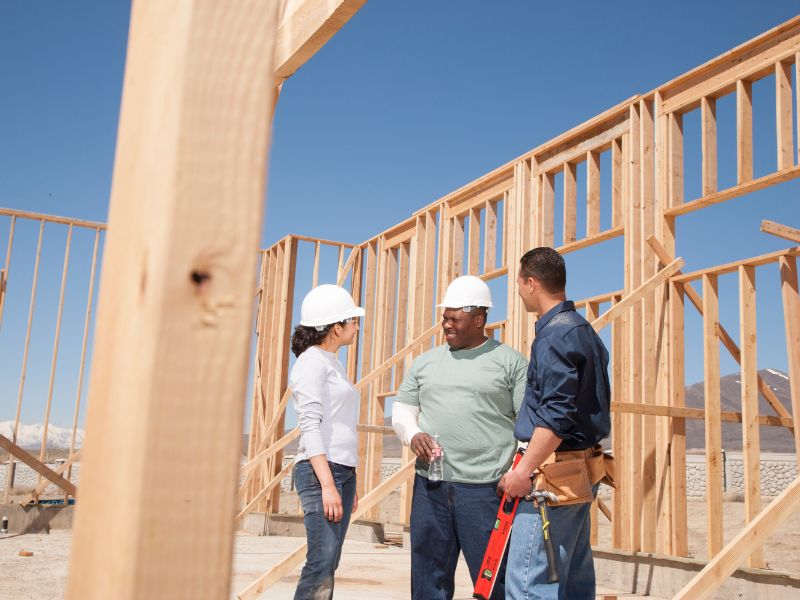The construction phase begins after you close on your construction loan. It’s at this point your construction loan is in place, and you can start drawing on it to complete your project. You will generally have 12-18 months to complete the project.
The most important thing to remember during the construction phase is that the loan will get paid out based on the original budget – line by line. If there are any increases in each line item, you will have to cover the increased cost dollar for dollar. This keeps the loan “in balance” with available funds to complete the project successfully.
The Draw Process
During the construction phase, your builder will request draws for work completed or items installed. Funds will not be disbursed to pay for future work, working capital, or standard material deposits. A number of things occur during this process. Ideally, if the process is smooth the only item you will be aware of is signing your owner’s statement to authorize the draw once the due diligence has been completed. All draws go through the title company.
There can be slight variations of every draw process depending on the builder and title company, but generally, it’s the following:
Initiate
– The builder sends a sworn statement and other items to the title company and the bank to initiate the draw request.
– Bank orders an inspection to verify the items that are being requested to be paid on have been completed.
Verify
– Title company reviews the builder’s sworn statement for accuracy and completeness as well as other items needed from the builder such as lien waivers.
– Bank reviews the builder’s sworn statement for accuracy completeness and budget changes. Any potential changes to the budget or line item shifting may require the client to send funds to the title company before the draw will take place.
– Inspection takes place to verify that all items that are being requested to be paid have been completed or completed at the percentage requested.
Request Funds
– Builder’s completed items are sent to Associated Bank’s servicing department from the title company.
– Homeowner signs an owner’s statement authorizing the draw, which is sent to the title company and then forwarded to the bank.
Disburse Funds
– With completed paperwork and inspection report showing work complete, the bank wires funds to the title company.
– Title company disburses funds to the builder and sub-contractors.
– Note: It is ultimately the homeowner’s responsibility to make sure the money that is being drawn from the loan and paid to the builder and contractors is accurate and reflects work complete. The homeowner has final control over the funds being drawn by signing (or not signing) the owner’s statement. Make sure you understand what the funds being drawn are being used for and that the amount is reflective of the work completed.
The Final Draw
The final draw is, of course, the last draw you take on your loan during the construction phase. It’s at this point the inspector will state your home is complete per the plans and specs on the final inspection.
Once the final draw is taken and the final inspection is complete, your loan changes over to the permanent loan. The permanent loan payment will be principal and interest based on the final balance of the construction loan amortized over the remaining term. In most cases, your final loan balance will be the amount of the construction loan. If the budget came in lower than initially projected or the client makes a principal reduction before the loan converts to the permanent phase, the P&I payment will be based on that lower amount and not the higher construction loan amount.
For example, if you took out a $500,000 construction loan but only used $490,000 and your project took 10 months, your P&I payment would be based on the $490,000 balance amortized over 350 months (30 years term minus 10 months). The rate would remain the same based on the rate you closed the loan.
The Permanent Loan
Depending on when in the month you take your final draw, your permanent loan will start between 30-60 days from that date. The permanent loan will change your payment from interest only to principal and interest at the same interest rate. If you escrow for taxes and insurance, your payment will continue to include your monthly escrow for those items.
It’s at this time a review of your current loan with other loan options available should be done. Although the existing loan will not balloon or come due, it’s best to see if there are other options available.
Questions About Your Construction Loan
Because we know this can be a complicated process, Ed Currie and his team are happy to explain this in detail and answer any questions you may have. Please call us at 847-214-2404, or contact us via our website.







